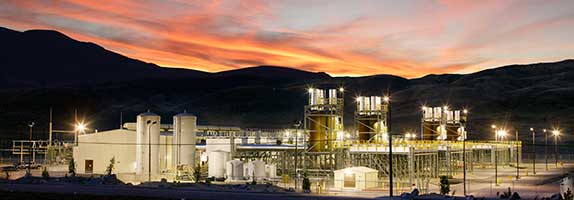

About Marine
India has embarked upon a laudable and ambitious program to install 100 GW of solar PV plants and 60 GW of wind turbine plants by 2022. However, such a large scale addition of variable or intermittent generation in a system packed with inflexible baseload coal plants – expected to total to around 250 GW by 2022 -will pose a challenge to grid management. Tackling this will require some planning and course correction.
Is there a precedent of any other country tackling such a high percentage of RE in its overall mix? Even if simplistic, let’s consider the examples of Germany and China.
In Germany – which has invested heavily in wind and rooftop solar PV plants- there is wide variability in both RE output and the power demand. There are times when RE generation exceeds the total demand, and times when it slackens off considerably. Due to the feed-in rights of RE generation, it gets despatch priority and baseload coal plants are turned down proportionately. If there is excess still, it is ‘dumped’ on the larger European grid- causing serious discomfort to the neighbouring markets. When RE generation is inadequate, the baseload plants ramp up suitably. Thus, in the German example, flexibility is achieved by turning up/down the coal plants. Paradoxically, this has increased the country’s net carbon emission, defeating the purpose of adding RE. The overall cost to consumer has also increased.
In China, over a 100 GW of wind turbines have been installed- particularly in the Northern provinces, which also, incidentally, have large coal reserves and a large number of pithead coal plants. As load centres are far away in the East and South-East, power is transmitted through HVDC lines. When the winds are high , and the demand is lower ( as in the night time or early mornings), the coal plants are turned down but as they need to be kept operating at a minimum load- either due to technical restrictions or because they need to provide heat- the only way to manage the excess is by curtailing wind generation. In 2015, according to Bloomberg data, over 16% of wind generation was curtailed in China- again defeating the purpose of adding RE plants, even as coal plants recorded an abysmal annual load-factor of 41%.
India seems to be heading the China way. Due to over-reliance on coal plants which have a rather inflexible operating profile, the variability of RE generation would need to be tackled either by curtailing it (as is already happening in Tamilnadu) or absorbing it by cycling down coal plants to a technical minimum level with low efficiency. Coal plants are already operating at a poor load factor of 51% and RE addition will only worsen the problem.
A report released by the Ministry of Power on ‘RE integration” in April acknowledges these issues and has, among other things, emphasised the need for more flexible generation in the system. In this context, “flexibility’ means a plant’s ability to start and ramp up to desired load within a few minutes (when RE generation falls), stop or reduce generation instantly (to fully absorb RE generation when it picks up), start/stop any number of times without a maintenance penalty and operate efficiently at all loads.
Hydro-electric plants are ideal for this application. However, the potential does not exist in all states and even where it does, it is not an all-season solution as it is rain-dependant and irrigation-linked. Fast-response gas-based generation is a good alternative. Modern plants, especially those based on combustion engines, have all the desired characteristics, with its all-season despatchability and ability to ramp up to full load within 5 minutes. These are different from the many plants in the country that are based on combined-cycle gas turbine technology and, not flexible enough for purpose of RE-balancing, are being operated sub-optimally as baseload plants.
But isn’t gas-based generation expensive? It is, if viewed in a narrow sense of cost/KWh at plant level. However, viewed holistically at a system level, it helps in reducing the overall generation cost per KWh by a) allowing coal plants to operate at its best load and efficiency- without the need to cycle down and incur more maintenance costs, b) helping absorb cheaper and cleaner RE fully – without burdened by its variability c) by reducing the need for water, an increasingly precious commodity and d) reducing the investment costs as the capex is far lower and the commissioning quicker. The cost of gas has also come down considerably in recent months.
Thus, flexibility needs to be built in by a capacity-planning modelling exercise and optimising the generation mix suitably. We can limit addition of coal plants to meet baseload requirement and allow hydro and flexible gas plants to complement RE. With this approach, we can meet our RE-generation and carbon-emission targets- without impacting reliability of the system.